|
|
7.8 out of 10 based on 13 ratings
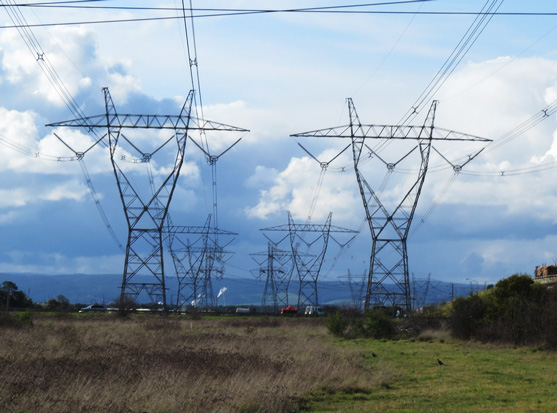 Who wouldn’t want to wake up to these beautiful towers… By Jo Nova
Just another community horror thanks to Green fantasies
Australia’s Power Grid is full they say, and to collect all the sacred green electrons and save the world now means building thousands of kilometers of high voltage towers that will carve up farms and wilderness, damage property values, and ruin good farming land. For some reason, inner city activists think that’s a good idea.
But out in the country farmers and rural people are angry.
Few people want giant wind turbines spoiling the view and their sleep, but if the turbines are built in lonely far-flung spots, then thousands of 70m high steel towers will have to cross the land anyhow to connect their useless electrons.
In theory the Renewable Crash Test Dummy nation “needs” another 10,000km of new transmission lines and they’re supposed to be built before 2030. To get some idea of just how impossible this is, consider Humelink which is meant to be the interconnector to “Snowy 2.0” (the doomed pumped storage scheme). It is only 360km long and was supposed to cost $1.1 billion but is now projected to cost $3.3 billion. What will the other 9,600 kilometers worth cost?
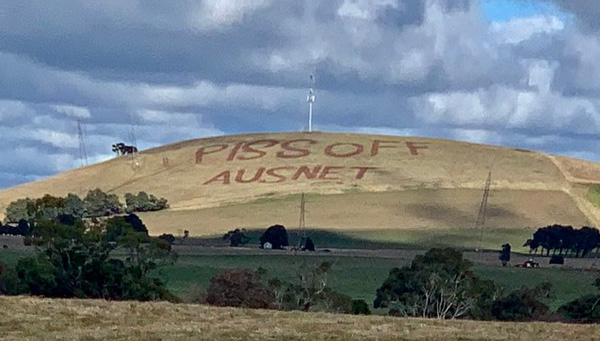 … We’re struggling to build those towers
It may have seemed like a good idea on the back of an envelope in Canberra, but out in the country, landowners are forming alliances to refuse the compensation on offer, saying they want the lines put underground, which will make building the transmission lines even slower and much more expensive. Only about 40% of the property owners affected by Humelink plans have accepted the offers, which means 60% haven’t. Given the schedule for blowing up coal plants in Australia, governments here are getting desperate, and are ramping up the offers — in NSW and Victoria landowners could get as much as $200,000 per kilometer in compensation. In Queensland the going rate is $300,000.
Farmers are not impressed. Some were arguing that they would lose an 80 m wide easement across their land. They can’t build or dig too close to the towers in case it weakens the footings.
Katz – and others – have already rejected an offer from the NSW government of $200,000 for every kilometre of his land crossed by a major infrastructure project, a payment which was designed to put an end to a deadlock between landowners and the state.
Katz says that allowing large pylons – each as tall as those on the Sydney Harbour Bridge – would reduce the value of his property by 30 per cent and significantly change how he manages his herd of cattle.
I do not believe, … that it makes sense to build it as an overhead line with such huge risks in causing environmental destruction in the name of saving the environment. That seems to me a non sequitur of monumental portions,” Katz tells AFR Weekend.
Origin Energy chief executive Frank Calabria assesses the scale of change required this decade to meet targets for 2030 as “truly staggering”.
Calabria told a business lunch in late November that the urgency and complexity of the challenge to meet the 2030 targets increases every day – as does the cost. The risk looms large of losing support for the transition from the community, which has been promised cheaper and cleaner energy from the process with little perception of the expense involved, he says.
One young Victorian farmer started building a new dream home only to find the bureaucrats wanted to erect the towers on his property and only 60m from his house. “I’m completely gutted,” he said.
4,000 people have joined the “Piss Off Ausnet” protest group in Victoria and protests are continuing. In NSW, the HumeLink Alliance are growing and further north The Merriwa Cassilis Alliance have won concessions in the Hunter Valley. (The line will now go through public land and old mining areas which will reduce the impact on farmers). Never mind about the wilderness though…
They explained some of the ways these transmission lines affect farmers:
Height restrictions on farming machinery, interference on guidance technology and the no go areas for aerial management means crops and pastures could not be managed in a timely and cost-effective manner.
Standard farming machinery like headers and boom sprays over 4.6m will be out of action, deemed too high to drive frequently and safely under these power lines. The use of light aircraft to manage crops, spread fertiliser and control pests and diseases would also be too dangerous to carry out near the powerlines. These practices are regularly carried out when crops or pastures are too advanced to manage on the ground.
Strategic agricultural land and transmission lines don’t mix!
It takes a lot of infrastructure to connect up the Green Totems:
Australians lose either way
If the government pays for the transmission lines, and pays adequate compensation to farmers, which they should if they build them, that just means the average Australian gets screwed for a even bigger bill to build the Green religious talismans against storms a hundred years from now.
The only people who benefit are the subsidy-farmers in the city, the foreign manufacturers of unreliable generators, adversaries that want to ruin competing industries, and any potential military foe.
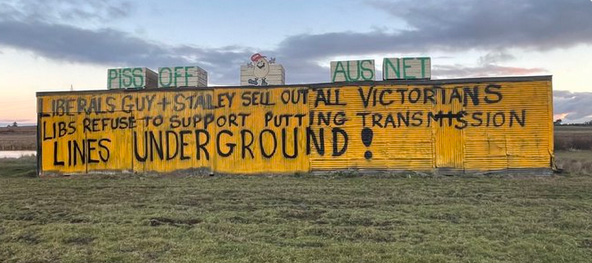 …
It would cost about 0.0001% of this to audit the UN science committees and find that it was all a waste of money.
9.8 out of 10 based on 104 ratings
8.3 out of 10 based on 12 ratings
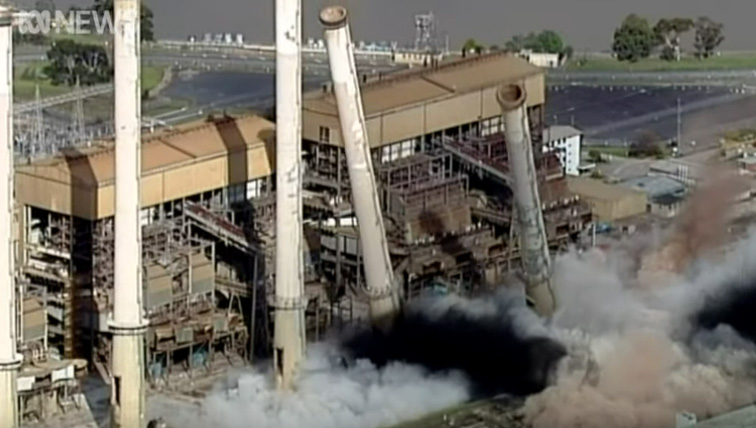
By Jo Nova
The land that is the Renewable Crash Test Dummy is holding its breath
This time last year, the Australian energy market turned into a kind of Hunger Games spectacle with daily feeding-fest at dinner time where prices were so burning hot that unhedged smaller retailers begged their own customers to leave them and then the whole market was suspended. The bonfire was so big we’re still paying for it, and retail electricity prices are set to rise another 25% in a few weeks.
So it’s no surprise that as the cold weather arrives downunder, everyone involved in energy is “on edge”. Suddenly Australian corporate leaders are telling it like it is — the Alinta Gas chief says there is just no way we can build enough renewables in time — he can’t even “see a way” of building enough renewables to compensate for the coal units that are being closed.
The man who used to run the Snowy Hydro Scheme agrees (and then some) — saying we need to build a “Snowy” every year, and we are being lied to (his words) and it will take not 8 years, but 80 years to get there. The head of EnergyAustralia says shutting down the Liddell coal plant means the system is “exposed”. These are people at the top (or formerly) of our biggest energy companies.
A year ago the new government won with a pledge to bring electricity prices down. Instead prices just keep rising and are set to remain high “for years”. To appreciate just how like the Starship Enterprise the nation is, going where no nation has gone before, we have a roughly 30GW grid, and in the next eight years 8GW of coal power is scheduled to be lost. But in reality the AEMO estimates that 14GW of coal power capacity will flee the rigged Australian market by 2030.
The cost of the rushed transition-we-don’t-have-to-have is estimated to be $120 billion which is $4,500 for every man, women and child or about $20,000 for a family of four, who could have gone to the Bahamas instead. As it is for $20k, they will get expensive unreliable electricity, lose jobs to China, and reduce world temperatures by 0.00 degrees C.
These are quite devastating quotes:
Colin Packham and Nick Evans, The Australian
Alinta chief executive Jeff Dimery, head of the country’s fourth largest energy retailer, said he could not see a way of building enough renewable energy sources to compensate for the loss of coal, which still generates about two-thirds of Australia’s electricity.
“We’ve had one battery reach a final investment decision in the last quarter – one battery,” Mr Dimery said.
“Snowy 2.0 is delayed, VNI West [interconnector] is coming in 2031, three years after Yallourn comes out. The whole transition is not lining up. We are so far off track.
The transition may not happen this century…
Paul Broad, who ran Snowy Hydro until resigning shortly after Labor won office last year, said the challenge of the huge pumped hydro expansion under construction could not be overstated, adding that was just a tiny fraction of new green-energy supplies needed.
“We need a Snowy every year, but it’s extremely difficult,” Mr Broad said. “We are being lied to that this is achievable; the transition will take 80 years.”
Colin Packham, The Australian
Australia’s electricity network is precariously balanced going into a peak demand period, the head of one of the country’s biggest energy companies has warned.
Mark Collette, head of EnergyAustralia, said recent fossil fuel closures, including the shutting of AGL Energy’s Liddell coal-fired power plant, had left the national electricity system exposed… If there were outages or supply shocks – we notice them”.
The Australian Energy Regulator last month approved bill increases of about 25 per cent for households and businesses across the east coast from July 1, which it said was predominantly driven by the increased cost of generating electricity in winter 2022.
Meanwhile the resolutely green AEMO (Australian Energy Market Operator) forecasts an improved winter outlook but says “risks remain”. Translated, they’re saying that things are slightly better than the bottom of the barrel and if nothing else breaks, we might get through the winter without the same trainwreck we had last year. Maybe.
But ponder that since last winter 400,000 immigrants have moved to Australia. It’s not clear the generation has even kept up with that.
We’ve added a lot of wind and solar power since last winter, but it didn’t improve the graph at all. It’s not dispatchable generation.
9.9 out of 10 based on 109 ratings
9.3 out of 10 based on 16 ratings
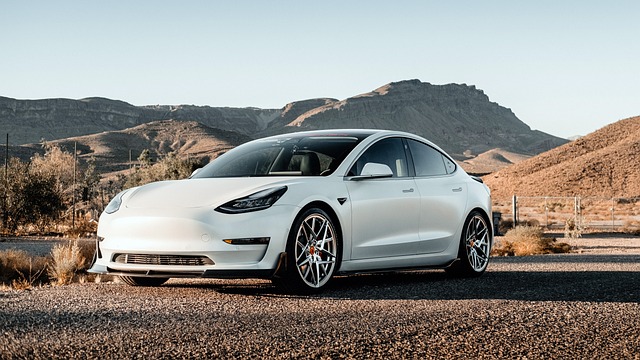
By Jo Nova
States all over the world have declared we have to change our cars to EVs and do it tomorrow so we can save the world. But as Mark Mills points out, despite the rush “No one can really say whether widespread adoption of EVs will cut carbon emissions.” I mean, does carbon dioxide matter at all?
The problem with EVs is that it takes a staggering amount of energy to dig up the 250 tons of specialty rocks required, and then crush, purify and mold them into one half-ton battery. While normal cars are naughty burners of fossil fuels for their whole lives, an EV emits a mountain of CO2 before it even gets to the saleyard.
Mark P. Mills
EV emissions realities start with physics. To match the energy stored in one pound of oil requires 15 pounds of lithium battery, which in turn entails digging up about 7,000 pounds of rock and dirt to get the minerals needed—lithium, graphite, copper, nickel, aluminum, zinc, neodymium, manganese, and so on. Thus, fabricating a typical, single half-ton EV battery requires mining and processing about 250 tons of materials. (These figures hold roughly true for all lithium chemistries.) For the carbon-counters tracking such things, the global mining and minerals sector uses 40 percent of all industrial energy—dominated by oil, coal, and natural gas—and that’s before we take into consideration the massive expansion that would be required to supply all the battery factories planned for widespread EV adoption.
Lithium Mining makes a big hole in the ground, and we’d need about 10,000 times as many big holes to get to Net Zero. Not that I have anything against big beautiful open pits but the Greens may not have thought this through…
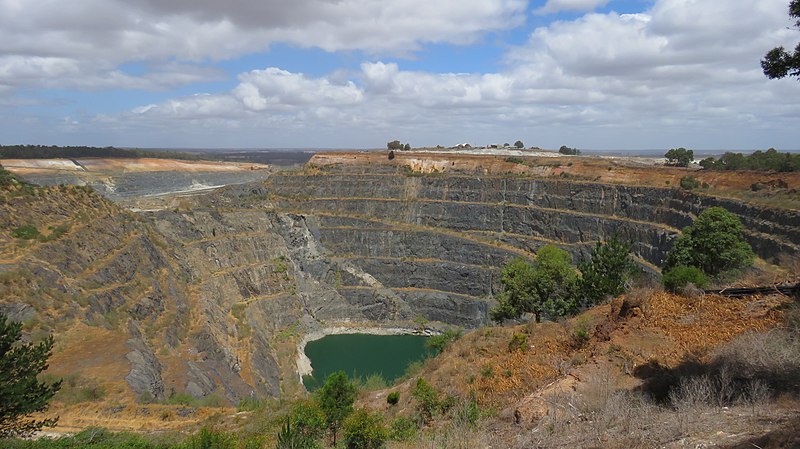
We don’t even know what emissions we will produce by making a billion EVs. As Mark Mills points out one review shows studies on this vary fivefold and start with the assumption the median car only uses a 30-kilowatt-hour battery. But most batteries are much larger. Indeed MyEVreview lists 344 electric cars and 327 of them have bigger batteries than 30KWh — much bigger batteries. Nearly 100 EV models are 90kWh or more — three times the size.
Ponder just how far you have to drive an EV to even get the emissions clock down to the same level as a fossil fuel powered car?
Some automakers—notably Volkswagen and Volvo—have published their own studies that take into account both upstream emissions and grid realities. Those analyses found that an EV powered on Europe’s grid creates more CO2 emissions than a conventional car until at least 50,000 miles of gasoline-free driving. After 120,000 miles, the studies estimated that total cumulative emissions reductions finally reach about 15 percent and 25 percent, respectively. Hardly “zero.”
Just to check that we understand Mills point we can visit the VW study to find that “yes”, it is that bad. The EV emits more CO2 than a fuel filled car for the first 125,000 kilometers. Only after that, there are some savings… but by the time you’ve owned that EV for years and driven 200,000 kilometers (or 120,000 miles) you’ll have saved a tiny 15% in total emissions produced by the diesel equivalent.
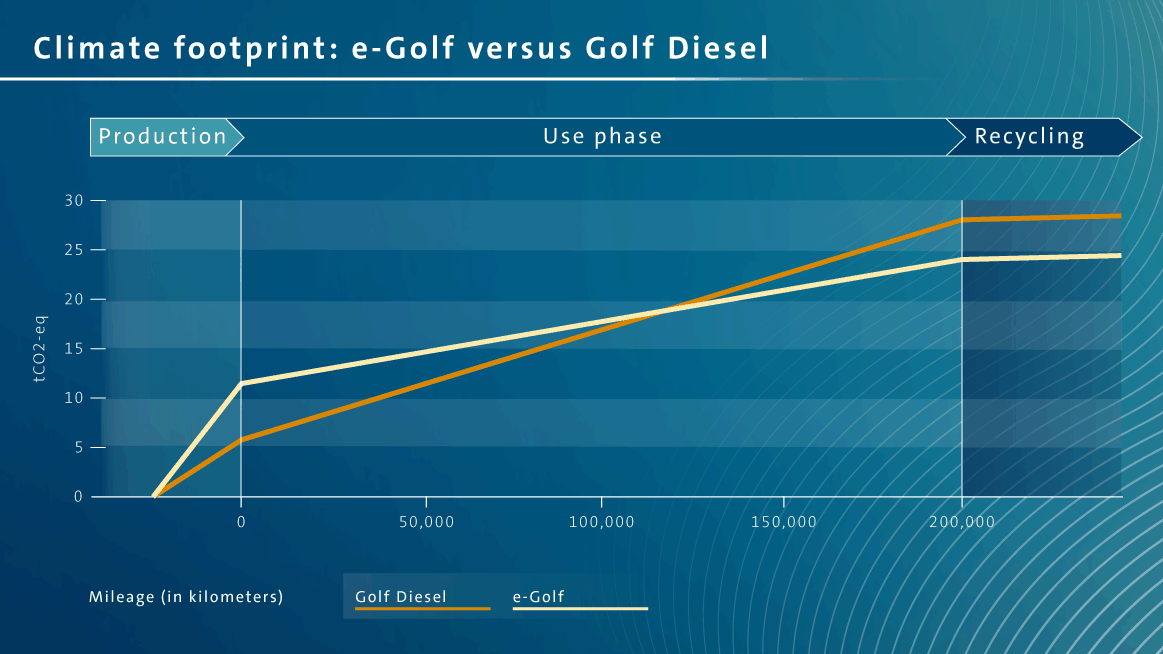 Comparison of the carbon footprint of the e-Golf and the Golf diesel. But of course, if you dent the EV after one year and have to write it off because no one is sure the battery won’t catch fire, then “the planet” would have been much better off if you bought a fossil fueled guzzler instead.
And as Mills points out, this dismal assessment is the optimistic one:
Those savings shrink for cars using batteries significantly bigger than small one in the Volkswagen and medium-sized one in the Volvo. And the calculated CO2 reductions collapse, and even evaporate entirely, if one factors in the higher ranges of known values for upstream emissions in mining and processing, rather than the low, average values chosen in those studies.
And it’s clear which part of the EV is the cause of all the emissions. If only EV’s could run without a battery…
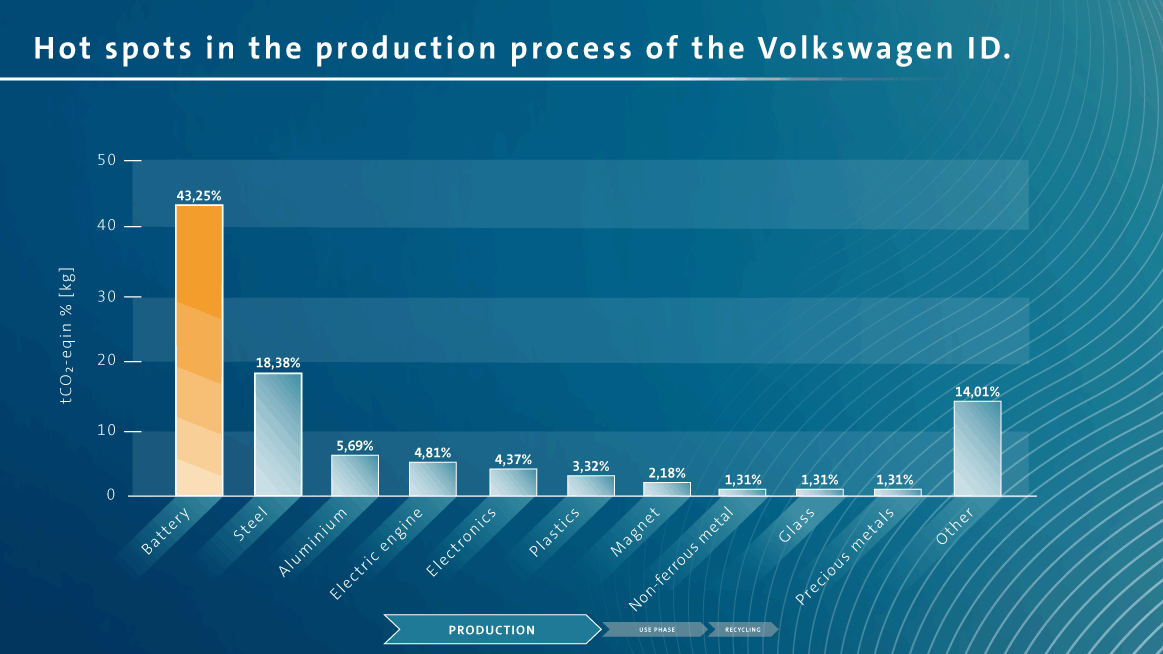 Comparison of the carbon footprint of the e-Golf and the Golf diesel.
And things are likely to get even worse as demand rises and we seek out deeper and more difficult ore-bodies to mine:
…per the IEA, “lower-grade ores require more energy . . . greenhouse gas emissions and waste volumes.” Already, for example, over the past decade in Chile, the world’s top supplier of copper, mining-energy use has grown ten times more than the tonnage produced.
As Mills also points out, the global mining and minerals sector already uses 40 percent of all industrial energy. It’s not like we can double this on a whim.
So we are pouring money into a program to “reduce CO2” which will cost a fortune and quite possibly achieve very little, if anything of the danger it was supposedly going to save us from.
Meantime, hundreds of billions of dollars designated for wildly premature all-EV mandates will likely become stranded capital because the quantities of minerals needed won’t be available soon enough. Along the way, those stranded billions will do little or nothing to cut CO2 emissions. In the end, the rush to EVs could even increase global vehicle-related emissions.
Luckily CO2 is plant food so it doesn’t matter that EV’s are a terrible way to reduce CO2. Unluckily money doesn’t grow on trees unless you are a central banker.
9.8 out of 10 based on 114 ratings
9 out of 10 based on 22 ratings
By Jo Nova
Brilliant. Jimmy Dore mocks the absurdity of the petty intimidation used to coerce people into obeying the pharmaceutical salesmen.
“Tell me boy, What you readin for…?”
Always they bully and shame people, instead of answering their questions.
In what other aspect of life do we mock people for doing their own research? — Climate Change. And it’s been going on for years.
Teach the children. The questions they don’t want you to ask, are the most important ones of all.
9.6 out of 10 based on 113 ratings
8.1 out of 10 based on 26 ratings
8.3 out of 10 based on 23 ratings
By Jo Nova
Nearly every proposal from the climate activists was struck down:
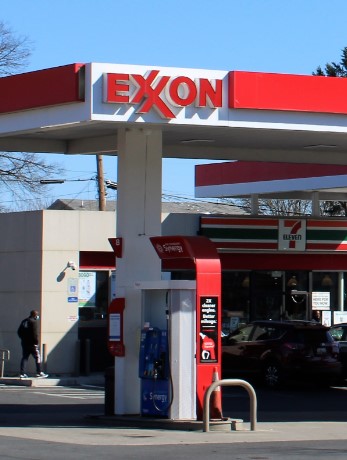 How times have changed. After the energy crisis of 2022 investors at major oil and gas firms are spurning climate activism. A year ago nearly a third of investors at Chevron and Exxon voted for the draconian “Scope 3” emissions targets. These targets are ludicrous — requiring the oil and gas giants to adopt a plan to reduce third party use of their own products. It’s like a form of corporate sabotage. How times have changed. After the energy crisis of 2022 investors at major oil and gas firms are spurning climate activism. A year ago nearly a third of investors at Chevron and Exxon voted for the draconian “Scope 3” emissions targets. These targets are ludicrous — requiring the oil and gas giants to adopt a plan to reduce third party use of their own products. It’s like a form of corporate sabotage.
This year only about 10% of the same investors voted for these measures. And apparently there’s a similar trend on the other side of the Atlantic with BP and Shell investors rejecting activism too.
This is a very encouraging sign that the dominance of BlackRock et al is waning — they are bullying the world with other people’s money, and word is spreading as the US states fight back.
By Collin Eaton and Jenny Strasburg, The Wall Street Journal
The votes were abysmal for climate activists. All but two of the 20 shareholder proposals for the two companies garnered less than 25% of investors’ vote, according to preliminary results, with some performing much worse than similar proposals put forward last year.
In recent weeks, similar climate proposals failed to win over most shareholders at annual meetings of British oil and gas giants BP and Shell in London.
It’s still bonkers that 10% of oil investors would vote for a plan to get their customers not to use their own product, but if those 10% were BlackRock and Vanguard, the giant financial asset managers themselves, then they have other ways to profit from these votes.
The ESG spell is broken:
But Wednesday’s votes demonstrated how some shareholders have backed off pushing major oil companies to embrace certain climate goals. Investors said many voices pushing ESG measures have been drowned out following Russia’s war in Ukraine, which caused oil and gas prices to skyrocket as global supplies were crimped.
Investments in fossil fuels pushed many oil companies to record profits last year, which lured back some investors who had fled after years of meager returns from the industry. Exxon Chief Executive Darren Woods said Wednesday the company had benefited from investing in fossil fuels when others pulled back.
But Woods and other industry executives have argued some climate-related proposals would backfire or leave the economy worse off. Woods said several proposals rejected Wednesday would have required the company to assume the world will cut carbon emissions at a much faster pace than observers have projected.
“Some [would] go so far as to force us to decrease oil and gas development,” he said. “This would do nothing to reduce global demand.”
This is a good sign that the free market is not dead yet.
______________________
ESG Means: environmental, social and corporate-governance issues.
Photo by Farragutful
9.8 out of 10 based on 95 ratings
8.7 out of 10 based on 16 ratings
By Jo Nova

It is in effect: If there is a train and it’s less than a 2.5 hour trip, in France you can’t fly — unless of course, you own your own private jet, the most “polluting” kind of plane (according to the EcoWorriers). How does that make “carbon sense”? Are we saving the planet, or just stopping the riff-raff from traveling?
It’s one rule for you, another for the Feudal overlords.
Private planes make 5 to 14 times as much CO2, but they are “good to go”?
by Valentina Morando, Impakter
… numerous studies demonstrate that private jets are much more impactful to the environment than other modes of transportations.
They are about “5 to 14 times more polluting than commercial planes (per passenger),” a report published by the Transport and Environment group in 2021 states.
According to a recent study, “only 1% of the population causes 50% of global aviation emissions.”
Right now there are only three routes in France that will be banned, Paris-Orly to Bordeaux, Nantes and Lyon affecting only 2.5% of all domestic flights. The original plan was to ban five more routes, but the timetables weren’t so friendly for early morning or late in the day flights.
No one says this better than Marc Morano:
Climate Lockdowns Begin: France bans short-haul flights ‘to cut carbon emissions’
Marc Morano –– Climate Depot:
“You were warned! This is what a climate lockdown looks like. This is what the Great Reset looks like. The climate agenda demands you give up airline travel, car travel, cheap reliable energy, and plentiful food. Net Zero goals are now dictating vehicle shortages to force more people into mass transit.
They’re going after your freedom of movement; they’re going after private car ownership, they’re going after everything it means to be a free person and turning it over to the administrative state.”
The Citizens illusion of Debate and Democracy
The BBC and others are mentioning that banning flights was first suggested at France’s Citizens Convention on Climate, as if Macron is just doing what the people wanted — but never forget that the people have been free all along to not-fly and take the train but they didn’t want to. The people of France were voting with their money and time, but now they can’t.
To create the illusion, Macron tasked a group of people to assume the world was going to end because of CO2 and come up with ideas. With enough monkeys on typewriters, how could they miss? Afterwards Macron can just pluck out the suggestions he was going to do anyway, and say “Voila — this is what the citizens suggested”.
France’s Citizens’ Convention on Climate, which was created by President Emmanuel Macron in 2019 and included 150 members of the public, had proposed scrapping plane journeys where train journeys of under four hours existed.
But this was reduced to two-and-a-half hours after objections from some regions, as well as the airline Air France-KLM.
There was no Citizens Convention on whether we can stop the storms with solar panels. No Convention on Holding Back the Sea. No one asks the citizens if it’s worth spending a trillion Euro to cool the world by one hundredth of a degree. It’s not democracy, and it’s not debate. The Bureaucrats only ask the citizens questions that make Big Government bigger.
As I said It’s the Reality TV version of “Democracy” where 150 people pretend they speak for a nation while 65 million people get sidelined. Expect to see them take off everywhere. They are the perfect tool for Big-Government.
Won’t change the weather, will kill people
Now that short flights are banned, how many people won’t take the train and will get in their cars instead?
France’s Ban on Short-Haul Flights Will Kill People
You’re 2,200 times more likely to die when traveling by car as opposed to by airplane.
VERONIQUE DE RUGY |
A recent study out of Harvard University found that, for people traveling within the United States, Europe, and Australia, the chances of being killed while flying are 1 in 11 million, while the chances of being killed while driving are 1 in 5,000. Put differently, you’re 2,200 times more likely to be killed when traveling by car as opposed to by airplane. By diverting some travelers from the air to the roadways, the French government will almost certainly cause more travelers to die.
Political theater, it turns out, can be deadly.
Don’t mention the private jets
The BBC doesn’t want anyone to notice that the Billionaires and corporate heads can keep churning out the CO2 of ten men…
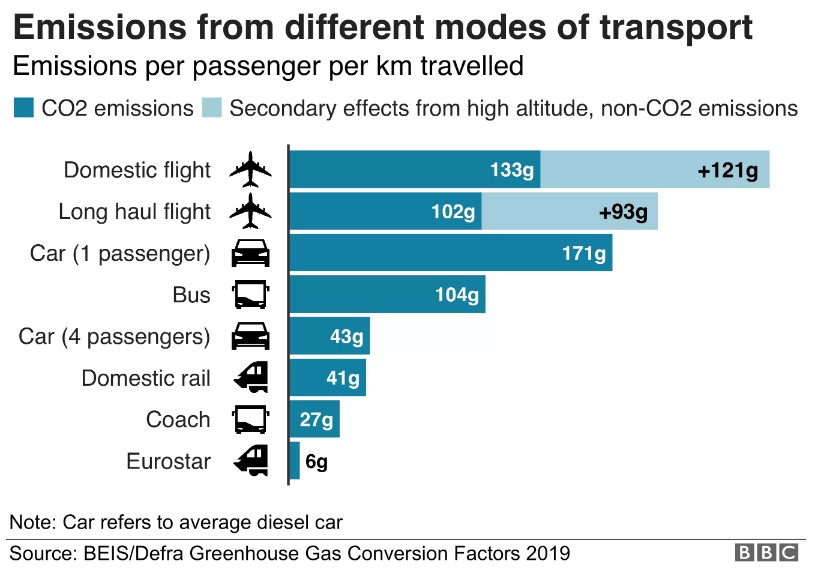
Putting private jets on the graph would blow the scale and shrink the rest to tiny lines.
Worse, it would expose that this law is not about reducing CO2 at all.
Image by dakotaviking from Pixabay
10 out of 10 based on 93 ratings
9.6 out of 10 based on 10 ratings
By Jo Nova
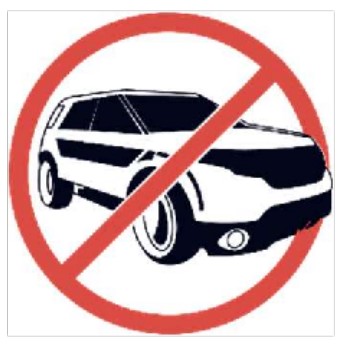 It’s a cult. Believers in the climate religion can’t persuade the rest of the population through polite conversation, so a few are resorting to vandalism-for-the-planet because they know more than you do about atmospheric physics, right? After a spate last year, the call has gone out for activists to sneak around again after dark, being the deceptive cowards they are, and let down the tyres of SUVs to punish owners for not joining their pagan religion. Judging by their twitter thread, it doesn’t seem like a mass movement. It’s a cult. Believers in the climate religion can’t persuade the rest of the population through polite conversation, so a few are resorting to vandalism-for-the-planet because they know more than you do about atmospheric physics, right? After a spate last year, the call has gone out for activists to sneak around again after dark, being the deceptive cowards they are, and let down the tyres of SUVs to punish owners for not joining their pagan religion. Judging by their twitter thread, it doesn’t seem like a mass movement.
Philosophically, it’s just bully-badger-and-harass people for the climate kind of thing. According to “Tyre Extinguishers“you too can change the weather 100 years from now by dressing like a bank robber, and prancing around in the dark making other people’s lives more difficult. “Bravo” eh?
The same evangelists don’t seem to be concerned with even heavier EV’s made with child labor, the solar panels made by slaves, or the landfill toxic waste, destruction of forest, birds and bats by renewables. It’s just a tribal performance art to impress their friends and fill the spiritual vacuum in their lives.
When will the grown-ups in the environmental movement condemn vandalism? It’s time the Greens were asked if they support this.
By Alex Blair, News.com
The Tyre Extinguishers is a guarded organisation that has built a global following in recent months, attracting what some have described as “extremist” activists who want to rid the roads of these “massive and unnecessary” vehicles.
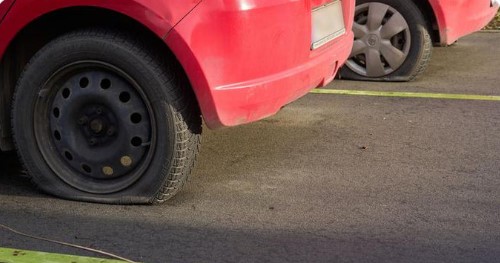 Just making the world a nastier place to live… Presumably, if this becomes common (which seems unlikely. How many people really get a thrill from this?) then SUV owners will respond by buying tyre valve locking caps, security cameras, and consuming more resources buying air compressors.
The group’s manifesto says activists should “inconvenience and expense SUV owners” by deflating their tyres wherever possible.
“SUVs are bigger and heavier than other cars, they are more polluting and use more fuel,” the group’s website reads.
“This makes them a disaster for our climate. International Energy Agency researchers were shocked in 2019 to find that SUVs are the second-largest cause of the global rise in carbon dioxide emissions over the past decade – more than shipping, aviation, heavy industry and even trucks.”
It’s a great way to make the average punter resent all forms of climate impost and see it for the fake religion it is.
Wealthy SUV owners have lockable garages, so this will hurt the workers more than the rich. It will also hurt EV owners when daft minions can’t tell the difference between a gas powered and battery fueled car (the group have a page that looks like it was written by a 14 year old, to help activists figure out what an SUV is). But the truth is there are only a sporadic few incidents of this around the world in the last month, 30 cars in Paris, 30 in Brussels, 38 in southern France, 18 in one German town and 46 in Czechia. There were some incidents in the UK and France in April. Most of the news stories on it date from last year.
What will they say when workers who own SUV’s miss medical appointments, can’t pick up children, get to hospitals, or care for aged or disabled people? How will they feel when they get charged with trespass? One Doctor has had her tyres slashed twice and leaves a note in her car saying she needs the car for on-call medical work and home visits.
Few heroes in history saved the world with vandalism.
They are also painting cars — like true vandals
This surely would be illegal if it was done with permanent paint (which apparently it was, and would cost £200 to have it removed). “Avon and Somerset Police said the incidents were being treated as criminal damage.”
Here’s the narcissistic, childish note they want to leave on your car
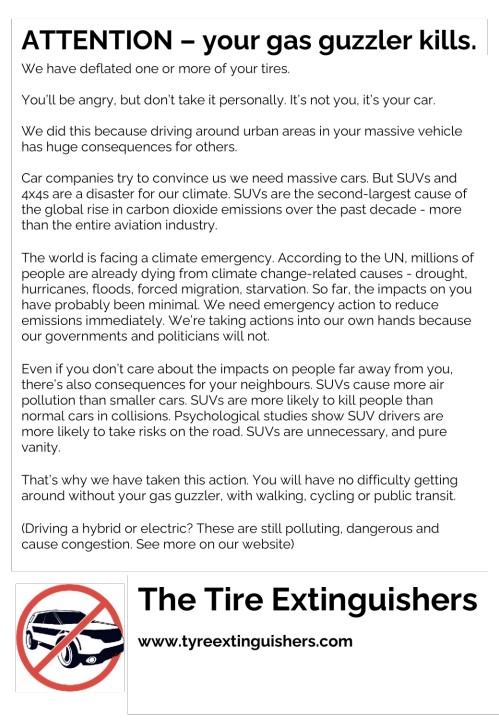
9.7 out of 10 based on 77 ratings
8.9 out of 10 based on 14 ratings
 By Jo Nova By Jo Nova
Thirty years ago a study reported a lower risk of fatal heart attacks in people who ate nuts four times a week.
Since then scores of studies have shown the same general conclusion, popped out in the news, then got forgotten til the next one. Last week a mega review whittled them down to just 42 “cohort” studies on 1.9 million people and concluded that yes, nuts really do reduce heart disease deaths by around 25%, it’s “probably causal” say the researchers. And it most likely works through reducing blood lipids, though it might be displacing something bad.
They did also look at 18 randomized controlled studies of just 2,266 people to check for causality.
My thought for the day is if, in the extreme case, 1 in 4 heart attacks are caused by a nut deficiency and solveable with a daily dose of 50 cents worth of nuts, we could save quite a few people, not to mention hospital budgets. Coronary Heart Disease remains the biggest killer in the West. In the USA 700,000 people die of it nearly every year, which means something like 150,000 people might theoretically still be alive had they eaten more nuts. And that’s just in the US.
It might be cost effective (not to mention humane) if our Ministry of Health tried to get the message out. This would seem extra sensible given that excess deaths are up 12 – 15% across the West for other unmentionable reasons. But then sensible things don’t seem to happen in government health departments.
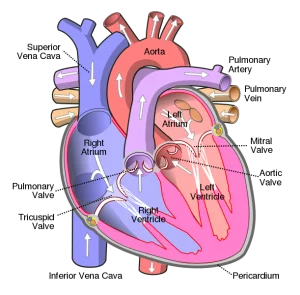 I’m not suggesting that nuts per se are some magical medical intervention, because there are many other useful things we can do. I’m just saying that there is low hanging fruit sitting there that our Government Health Machines have little interest in. The Minister of Health isn’t handing out cashew nuts in carparks, or giving the poorest of the poor nut-subsidies. Does the Minister really want to keep people out of the Emergency Ward? I’m not suggesting that nuts per se are some magical medical intervention, because there are many other useful things we can do. I’m just saying that there is low hanging fruit sitting there that our Government Health Machines have little interest in. The Minister of Health isn’t handing out cashew nuts in carparks, or giving the poorest of the poor nut-subsidies. Does the Minister really want to keep people out of the Emergency Ward?
No one seems to be training doctors to ask patients if they eat any nuts at all. But patented drugs with similarish ball park figures (and many side effects) get the red carpet rolled out. Our brightest of the bright are trained for six years to write special licences for people to get these patented profitable answers.
There is a pattern here and all roads lead to a pile of money.
In terms of deaths from heart disease the big benefits come in the first ten grams a day — just getting those people who don’t normally eat any nuts to eat a few will probably save the most lives.
 Figure 6b: Linear (red, dashed line) and non-linear dose-response (black lines with confidence intervals) association between total nuts and seeds consumption and coronary heart disease mortality (panel B; 9 studies) in cohort studies, with 0 g/day as reference. Circles show the effect estimates for each level of intake in the individual studies, weighted by the inverse of the standard errors. Vertical axes are log scaled. In terms of total risk of heart disease — which still has a big effect on quality of life — the benefits appear to accrue up to 20g a day or even more.
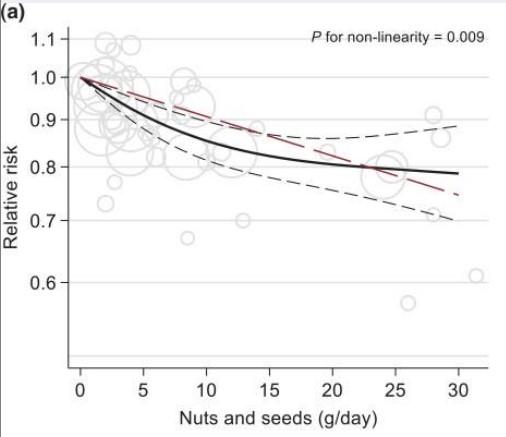 Figure 6a: Linear (red, dashed line) and non-linear dose-response (black lines with confidence intervals) association between total nuts and seeds consumption and risk of total coronary heart disease (panel A; 14 studies), with 0 g/day as reference. Circles show the effect estimates for each level of intake in the individual studies, weighted by the inverse of the standard errors. Vertical axes are log scaled.
Studies of associations with diet and death are notoriously confounded, but with 1.9 million participants and follow up times of up to 23 years long, there is an awful lot of data suggesting that people who eat more nuts have healthier hearts. The paper itself has 167 references. It is a tome.
By Cara Murez, HealthDay News
One way to reduce the risk of heart disease: Eat more nuts and seeds, according to a new review of 60 studies.
Scandinavian researchers found that eating nuts could reduce the risk of a heart attack.
“If you eat a handful of nuts every day, that is around 30 grams, you will have a 20% to 25% lower risk of suffering from cardiovascular disease. In comparison, adults in the Nordic countries only eat on average around 4 grams of nuts a day. Many do not eat nuts or seeds at all,” said study co-author Erik Arnesen, research fellow at the University of Oslo.
Keep reading →
9.9 out of 10 based on 65 ratings
 Dr Aseem Malhotra “The Greatest Medical Deception We will Witness in our Lifetime”
A Blockbuster Speaker: Dr Asseem Malhotra, a Consultant Cardiologist in the UK was one of the first to speak up about vaccine heart risks.
Book for Melbourne (June 1 and 2) , Brisbane (June 5th scroll down!), and Perth (June 10th). It is already sold out or taken place in NSW, the Gold Coast, South Australia and the ACT. (Sorry!) Hopefully video will be posted.
Hosted By Topher Field
There are different extra speakers at every event. Check the links above. In Perth don’t miss Ed Dowd — the former BlackRock executive who wrote a whole book on excess deaths (remember him talking to Tucker Carlson?). Plus Naomi Wolf — the famous feminist who has been red-pilled and now campaigns against vaccine mandates (via satellite). And John Shipton — Julian Assange’s father.
2023 NATIONAL TOUR

 The AMPS is a new medical organization for doctors and health workers in Australia formed during the pandemic because the AMA was doing such a bad job. Find out more about the AMPS and the tour on Facebook and Twitter: @AMPS_RedUnion The AMPS is a new medical organization for doctors and health workers in Australia formed during the pandemic because the AMA was doing such a bad job. Find out more about the AMPS and the tour on Facebook and Twitter: @AMPS_RedUnion
I’ll be there at the Perth event.
9.7 out of 10 based on 53 ratings
10 out of 10 based on 10 ratings
Climate experts wrong on Australian frosts, and media say nothing
The IPCC experts were sure would be less frosts in Australia, but buried in a government funded ABC weather report was the virtually unknown admission that the frost season is actually growing across southern Australia, not shrinking. And in some places by an astonishing 40 extra days a year. What’s more, the researchers have known about this long term trend for years but didn’t think to mention it, and the ABC didn’t have a problem with that either. (It’s not like farmers need to know these things?)
When asked for an explanation for the increase in frosts, the ANU climate expert said “I think this is one of those climate surprises,” as if the IPCC unexpectedly won a game of Bingo, instead of getting a core weather trend 100% wrong.
We note the ABC feigned journalism to cover up for the Bureau of Meteorology and IPCC failures. Where were the headlines: “Climate Change causes more frosts, not less”, or “IPCC models dangerously misleading on frosts?” Did any Australian farmers and investors buy up properties and plant the wrong crops based on the global warming misinformation repeated or tacitly endorsed by the ABC, BoM and CSIRO?
Frost damage costs Australian farmers around $400 million each year. (Perhaps if we sold the ABC we could cover that).
By Tyne Logan, ABC Australia
Buried under 450 words of weather, trite caveats, and preamble the ABC journalist finally gets to a new virtually unknown climate trend that affects farmers, investors, researchers, and rural Australia:
The latest Intergovernmental Panel on Climate Change report projected, with high confidence, that frost events would decrease, in general, across southern Australia in the future with climate change.
ANU climate applications scientist Steven Crimp said some parts of New South Wales were now experiencing five more frost events on average each year, compared to 1960.
And he has known for years:
He said this was based on local weather station data between 1960 and 2018, but the trend was unlikely to have changed much in the past five years.
“I think this is one of those climate surprises,” he said.
Scientifically they are not caught unaware because climate models are useless politicized fantasies, it’s because there is more “climate-nuance” around now:
“Despite the sort of overall warming trend in our temperatures, the extremes of our temperatures, be they hot or cold, are acting in a slightly more nuanced and complex way, which can be quite surprising at times,” he said.
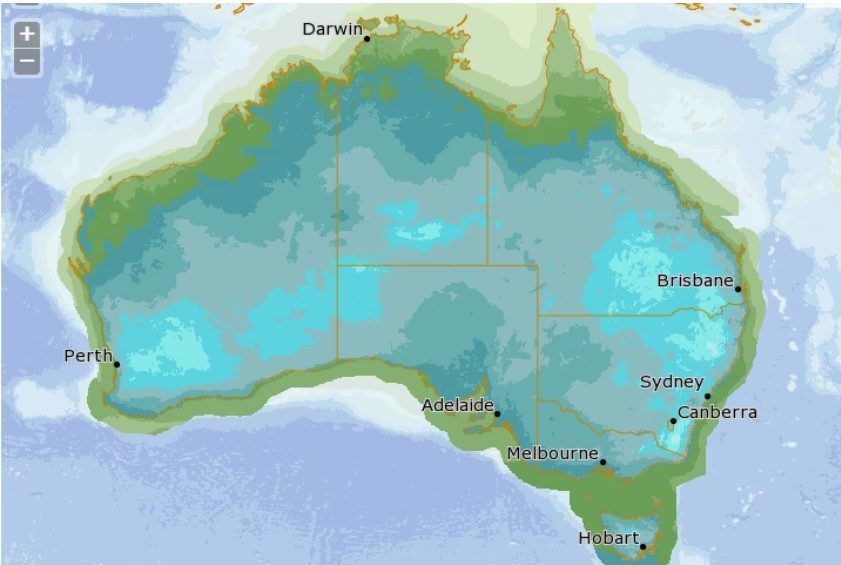 BOM forecast overnight minimum temperatures to fall well below zero across large swathes of the country [last] Sunday. But jokes aside, this actually seems like a trend that matters:
Dr Crimp said they had also found the frost season was lengthening across southern Australia.
“So if we think about the east coast first, we see an earlier start and a later finish to that frost window,” he said. “In some cases, the extension of that frost window is greater than 40 days.
“But in Western Australia in particular, we see that it’s less to do with the later frost occurrence, but more earlier frost occurrence.”
The frosts are due to the dry conditions, says Dr Crimp, putting in an admirable effort at scientific-word-salad to cover up for what he’s not allowed to say — that they have no idea.
Why aren’t frost days decreasing?
Dr Crimp said, ironically, the observations could be explained by the types of weather system that brought warmer, drier weather. That was high pressure systems which often produced the clear, still nights needed for frost to settle.
“As anyone knows who’s outside at night in winter, you have to have those clear night skies and the atmosphere needs to be very dry,” he said.
“That way the surface of the Earth loses heat very rapidly and any moisture in the air then condenses as a frost. “So because we are getting those dry conditions that are starting to emerge, that is more conducive for frosts to occur.”
But the truth is that, on average, and a priori — global warming would increase humidity and global cooling would dry the air out. And carbon dioxide is supposed to work at night time too — increasing minimum temperatures. All these factors make frosts less likely.
And yet the frosts happen.
Global warming ‘science’ has lost,
Being useless, at a terrible cost,
As their heat without end,
Is bucked by the trend,
Of Australia’s more nights of frost.
–Ruairi
h/t to A happy little debunker who points out we’ve had three wet La Nina years as well.
9.9 out of 10 based on 118 ratings
|
JoNova A science presenter, writer, speaker & former TV host; author of The Skeptic's Handbook (over 200,000 copies distributed & available in 15 languages).

Jo appreciates your support to help her keep doing what she does. This blog is funded by donations. Thanks!


 Follow Jo's Tweets
Follow Jo's Tweets To report "lost" comments or defamatory and offensive remarks, email the moderators at: support.jonova AT proton.me
Statistics
The nerds have the numbers on precious metals investments on the ASX
|


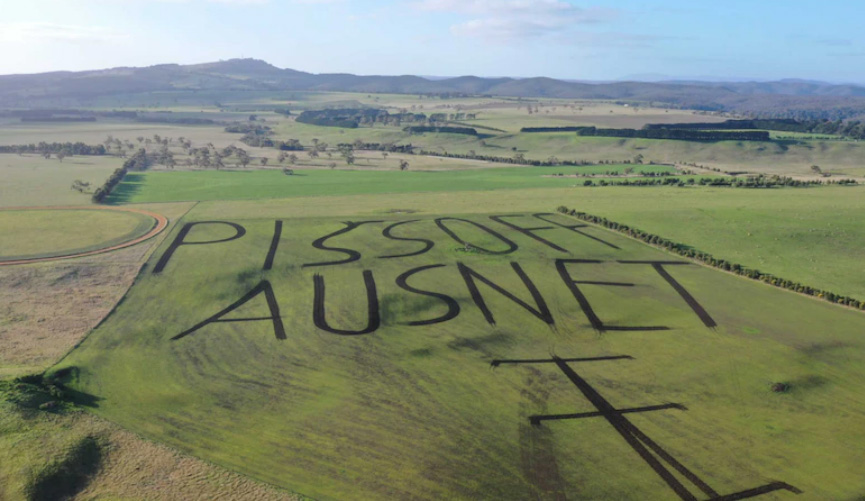

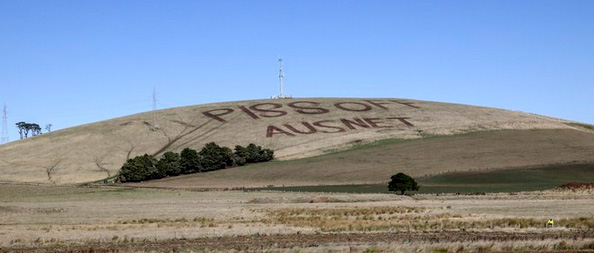
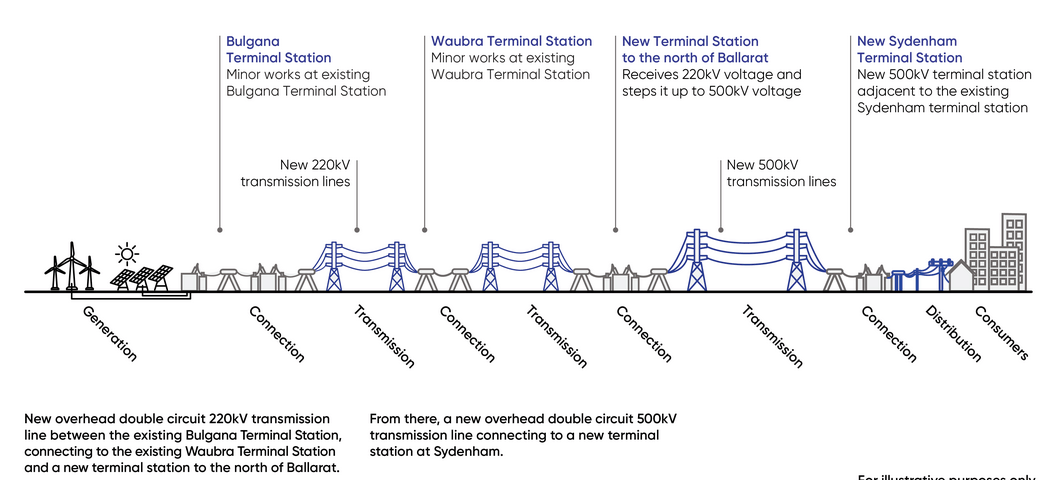


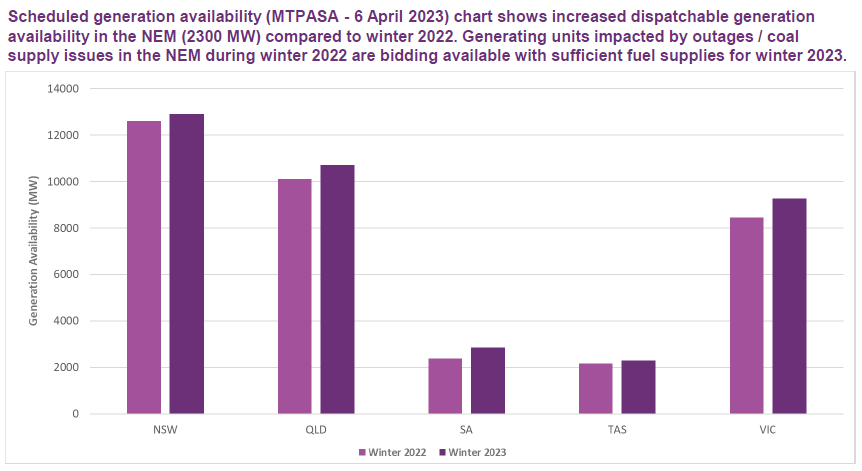






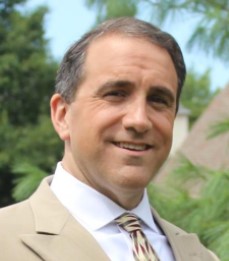



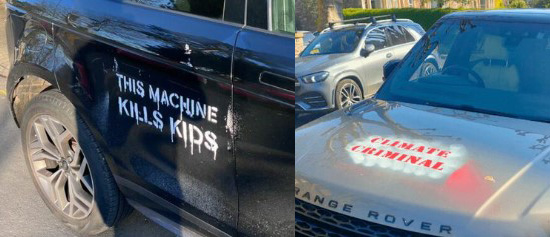








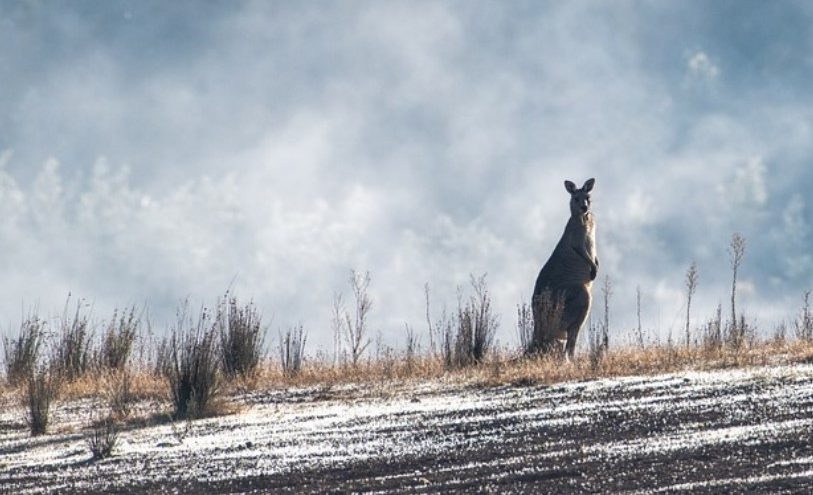












Recent Comments